Portable radio stations of the combat control network
Portable radios form the basis on which tactical united nets are based.
The Combat Control Network (RAS) radio station has become the “workhorse” of a dismounted user since the migration of tactical mobile radio stations from vehicles to humans. When operated in platoon, squad, settlements and fire brigades, everywhere RAS provide feedback to the higher command and neighboring units using very high frequencies (VHF), as well as over-the-line communication channels through the use of high frequency (HF) and military satellite communications MILSATCOM .
The need for RAS, which enable the digitization of military formations, remains high and constantly growing. When the first brigade battle groups equipped with the STRYKER BTR were deployed in Iraq in 2003, they had a total of XINUMX radio stations SINCGARS, 1200 PRC-78HF and 150 PSC-26C in addition to other radio stations. Since then, the need for additional communications in these and other units has also increased dramatically. The US Marine Corps, for example, announced plans to increase the number of portable radio stations alone at the battalion level to 5 PRC-25F (VRC-117 variant to 103 units) and to 20 PRC-33HF.
Portable radio stations have a transmission range and capabilities that are far superior to the characteristics of smaller “hand-held” radio stations. Although the first regular devices were big, heavy and cumbersome, nevertheless, they were the first “lifesaver” for any military man looking to improve the capabilities of C4I (command, control, communications, computers and intelligence - command, control, communications, collection of information and computers) of their dispersed forces.
Frequency selection
It may be useful from this point of view to briefly recall that a very high frequency (VHF) is the radio frequency range 30-300 MHz. Frequencies directly below VHF are referred to as high frequency (HF), and the next higher heights are ultra high frequencies (UHF) (300-3000 MHz range). Usually, the VHF band is used for FM broadcasting, television broadcasting, land mobile stations, maritime communications, air traffic control devices and air navigation systems (in particular, omnidirectional beacons). The HF range is very popular among radio operators, its advantage is manifested when using direct long-range (often intercontinental) communication systems.
At the portable level, VHF still dominates. This range provides between two soldiers when patrolling a communication range of about 8 km. But it is still caused by the curvature of the earth's surface; if every soldier falls on the ground, then the range will fall. Such a modest range is good for communication systems inside and between platoons, when there is no need to raise the altitude to solve problems. A good signal transmission at these frequencies and the possibility of a wide channel also increase efficiency, and the emergence of strong encryption methods made the military accept VHF.
In the future, the creation of a mobile ad hoc network, especially in the UHF band, where the data transmission capacity is higher, threatens the dominant position of the VHF at lower levels, as it combines extended range and excellent transmission characteristics in an area filled with interference. Despite this, the small number of deployed VHF radio stations and the limited frequencies available to the military today mean that this class of radio stations will remain in place for many tasks.
The following is a brief presentation of some of the currently available models in various classes.
Very high frequencies (VHF)
Kongsberg’s universal multi-radio MRR (Multi-Role Radio) was originally developed for the needs of its home market, but sales went beyond Germany; Hungary chose it back in 2002 and became the first overseas buyer, then followed by other countries around the world. This was particularly the case when this radio station was not American-made and thus did not fall under the American rules of international trade. weaponsthat is a positive advantage for countries wishing to get the capabilities of modern digital VHF radios.
The MRR operates in the 30 – 88 MHz band on the 2320 channels and has an output power up to 5 W. Protective electronic measures include the proprietary NBDS (Narrow Band Direct Sequence) broadband spectrum at a fixed frequency, multi-hop packet transmission with automatic routing and multi-path integration. Signal propagation in the MRR is improved by using NBDS technology, which allows reception in a very noisy space. Communication facilities are routed using packet radio at 19,2 Kb / s with forward error correction (FEC) in synchronous and asynchronous modes. Norway chose to upgrade from 16CVSD to 2,4 Kb / s with speech coding according to the MELP standard.
In FM mode, the MRR is compatible with PRC-77 and the NATO STANAG 4204 standard for backward compatibility. For integration with zone communications, a mobile connection to the SCRA network (single-channel radio access system) can be established using systems that use the improved X.25 protocol modified for military needs, although the company is currently moving to IP-based protocols.
The first ITT SINCGARS radios (Single-Channel Ground-Air Radio System - a single-channel radio communication system of ground forces and aviation) were delivered in 1987 to a total of 33 countries. ITT recently announced that it has delivered its 350000th radio station, while production continues, it increased from 1000 units in February 2005 to 6000 units monthly to meet the needs of the United States. The United States is also acquiring the new modified SINCGARS as a standard model in order to install the new SIDEHAT add-on module. The first 31000 radio stations capable of receiving the SIDEHAT module were ordered in October 2006 under a $ 240 million contract.
The newest American radio station in the family is the Light Advanced SINCGARS SIP Advanced Advanced Lightweight SINC or SIP Radio Station. It operates in the 30 – 88 MHz band and weighs 3,6 kg, offering noise-tolerant communications and standard data mode up to 9,6 Kb / s (Advanced 16 Kb / s). The radio has a BA5590 battery with an operating time of 33 hours, it is also equipped with a wired connector connected to the display of the Control Unit of this radio station.
ITT has launched a number of improvements for SINCGARS, including the addition of an 12-channel embedded GPS card SAASM to a non-BOWMAN type radio station, as well as the use of geolocation features as a combat identification tool. Tadiran’s US subsidiary of Tall-Tech provides support for SINCGARS for the US Army, and received more than half of the 125 million-dollar contract that was first issued in 2010.
The standard portable radio BOWMAN family is AN / PRC-355 Advanced Data Radio + (ADR +) (modern radio station for data transmission). It weighs 3,4 kg with battery and has dimensions of 185x88x234 mm, complies with the British standards DEF STAN 00-35 and DEF STAN 59-41 for environmental conditions and electromagnetic interference / electromagnetic compatibility, respectively. The system also uses SAASM GPS chips from Rockwell Collins UK, which provide noise-resistant geolocation. In the dismounted 16-W mode, the PRC-355 can be turned from a local alert system by adding a second battery pack and a raised antenna.
The United Kingdom seeks to ensure interoperability with United States standards for encrypted frequency hopping, works towards creating a waveform for JTRS radio stations (Joint Tactical Radio System - reprogrammable radio stations using a single communication architecture) and can also implement the STANG 4204 standard.
The BOWMAN PRC-354 is a subportable, manual plus wearable radio station designed for branch and firing squad leaders. The radio with battery weighs 1,2 kg and measures 44x94x194 mm. Like the ADR +, the PRC-354 operates in the temperature range from -40 ° C to + 71 ° C. Britain is currently considering options for upgrading the PRC-354 as part of a reflow program to improve ergonomics.
The BOWMAN program also created the CENTAUR product line, for which components of the base systems from ITT were taken and additional features were added, such as the Battle Control System and the THESEUS communications control system from BAE Systems for the production of an autonomous tactical communication system for export.
CENTAUR is the second family of radio stations from ITT for export. The earlier advanced tactical communications system ATCS (Advanced Tactical Communications System), released in 1996, was also widely sold. It is the US export version of SINCGARS ASIP with six presets of frequency hopping and six presets of six channels. The radio station weighing 3,6 kg, in which the standard battery BA-5590 is installed, also has a mode of relay of automatic switching between voice and data.
ITT's BOWMAN plant in Basingstoke is responsible for producing CENTAUR and ATCS radio stations.
The CNR9000 High Data Rate from Tadiran Communications 30 – 108 MHz band is the newest addition to the company's VHF radios. A data network is installed using the TDMA standard (Time Division Multiple Access - Multiple [time] channel division multiple access) with a frequency hopping waveform and secure data transfer characteristics up to 115 Kb / s with a vocoder operating at 2,4 – 4,8 speed Kb /with. The Ethernet interface allows you to externally manage the functionality of the router, the network connection, and manage SNMP (Simple Network Management Protocol). The CNR-900 has wireless key reassignment and zeroing with Windows-based management tools for frequencies, network management, and frequency distribution. Cryptography can be adapted for the user by using the SCIP protocol with full on-line encryption with a high level of security.
Terma offers CNR-9000 under the designation RT8. Formulated and implemented solutions to meet the need for VHF radio stations to replace the Danish VRM-5080, this solution determines the number of approximately 3000-5000 radio stations.
Thales and the Romanian company Elprof continue to offer the former PANTHER V-EDR radio station from Racal, which operates in the 30 – 108 MHz band. It is described by the company as having the smallest portable EPM transceiver (with electronic protection). All PANTHER modes have frequency hopping during 1000 jumps per second using 256 channel switching in eight guaranteed orthogonal networks plus a free channel search mode. The radio has eight programmable networks. Unmodulated data transfer occurs at 115 Kb / s through RS232 with asynchronous and synchronous data on 16 Kb / s with a decrease to 9,6 Kb / s with FEC (Forward Error Correction). Each network has custom services that allow you to make selective calls and radio lock with Multiple Simultaneous Access to 100 selective FHS calls to the network (call with frequency hopping). The radio can be remotely controlled to 4 km using two-wire connections. It weighs 5,9 kg with a battery that provides 32 hours of operation, has a built-in GPS module and backward compatibility with an earlier JAGUAR radio station.
The latest member of the Thales PR4G family is known as PR4G VS4-IP in France or F @ STNET for export. The radio operates at 30 – 88 MHz and weighs 5 kg with a battery that provides 24 hours of operation; It has a built-in GPS system and high electronic noise immunity protection at over 300 jumps per second. The radio transmits voice data at 64 Kb / s, supporting the standards STANAGS 4479, 1200, 2400, 4198 and 4591. A special IP protocol is the basis of the tactical Internet of this radio station and F @ STNET also supports voice and data (SIVID) simultaneously. The power of the radio frequency signal is up to 10 W in dismounted mode.
PR4F / F @ STNET was sold to 37 countries in the number of 125000 pieces. Poland is the most recent buyer, PR4G is produced by the Polish company Radmor. In 2006, the company switched to F @ STNET for local consumers, its portable version under the designation RCC9211 was purchased for deployment in Afghanistan. Spain is another country that recently chose F @ STNET, the production of which will deal with Amper Programas.
With the purchase of Titan, L-3 currently offers a series of PRC2100V tactical radio stations with transmit power up to 10 W in the 30 – 88 MHz band, FM, simplex and half-duplex voice, 16 data transmission bandwidth in Kb / s, with an output interface RS232 and internal GPS.
The Harris FALCON II RF5800V-MP radio station operates in the 30 – 108 MHz band. The basis for encrypting this radio station is the CITADEL ASIC protocol, which provides 128-bit digital data and voice encryption in conjunction with the QUICKLOOK proprietary frequency hopping protocol. Users can switch between standard 16 Kbps speed when using a modulated modem; when operating a high-speed FSK modem, the speed increases to 64 Kb / s. Without batteries, the radio weighs 3,4 kg.
Radio station PRC-117G
A fighter from the communications division of the British Army works with a portable radio BOWMAN 325 HF at the British base in Afghanistan. British forces in Afghanistan widely use new radio station BOWMAN
High frequency
The emergence of high-bandwidth communication lines and the difficulty of establishing a communication channel caused the military to be interested in high frequencies (HF). Currently, the need for over-the-horizon communications at the patrol level and similar tasks has made the use of HF mandatory, and using the Automatic Link Establishment (ALE) mode. ALE is now well established and guarantees easy connectivity for non-specialists, although the need for frequency hopping, secure ECCM communication (measures to combat electronic countermeasures) and because of the limitation of the available frequencies 1,5 – 30 MHz means that as a carrier its bandwidth is limited.
While work in the HF band remains an area of widespread use of portable radio stations in a dismounted role, the energy requirements and physical size of the radio-frequency filters made it possible to apply this band in manual applications. The first handheld HF radio station Thales TRC374 with 5 W power, which operated at 11 – 15 MHz at the 3 km range in the jungle, was an innovation that did not happen again.
Radio Systemes 3000 or TRC 3700 HF from Thales is described by the manufacturer as programmable (SDR - Software-Defined Radio). The 3,7 kg system operates in the 1,5 – 30 MHz band with an 100 Hz step and output power up to 20 W. The radio is designed for a seamless connection to the VHF-PR4G messaging networks that use IP routers; the radio station is part of the french program "Melchior".
Codan has long been a supplier of police, peacekeepers and services involved in the delivery of humanitarian aid by air, and now it is beginning to aggressively invade the military market with its 2110M model operating at 1,6 – 30 MHz. More than just a green walkie-talkie, this radio station offers noise-free frequency hopping and voice encryption on 600 channels on 20 radio broadcasting networks. The radio is compatible with MIL-STD-188-141B ALE and FED-STD-1045 ALE standards and can also use Codan's Advanced ALE (CALM - Codan Automatic Link Management). The radio has a built-in GPS receiver and meets the requirements of the MIL-STD-810F standard for operating in adverse conditions, including immersion in water by one meter. It weighs only 2,6 kg and has a rechargeable battery that allows you to work 50 hours. Given the fact that users often HF are often in long patrols or separate from the main troops, it also has an emergency call button that transmits exact GSP coordinates.
Q-Mac is another manufacturer of portable HF radios offering the HF-90M Ultralight, 2 – 30 MHz, 50 Watts with 255 programmable channels in a portable version with a total 4 kg for the ultra lightweight version of the MX9000 or 8 kg for the standard version HF-90M, with small dimensions 112x47x220 mm. The data functionality is controlled by an external QTXM field terminal data terminal (QM9080 FDT), in which an optional GPS device is installed. The radio performs encryption at five frequency jumps per second.
Barrett's 2040 HF portable radio completes the Australian top three. For security, Barrett offers five bursts per second and a ten-bit re-configurable encryption key; it has the ability to set up to 500 programmable channels with secure voice transmission at the expense of a narrowband voice encoder. The 2040 radio weighs 6,4 kg, including the battery weighing 1,2 kg.
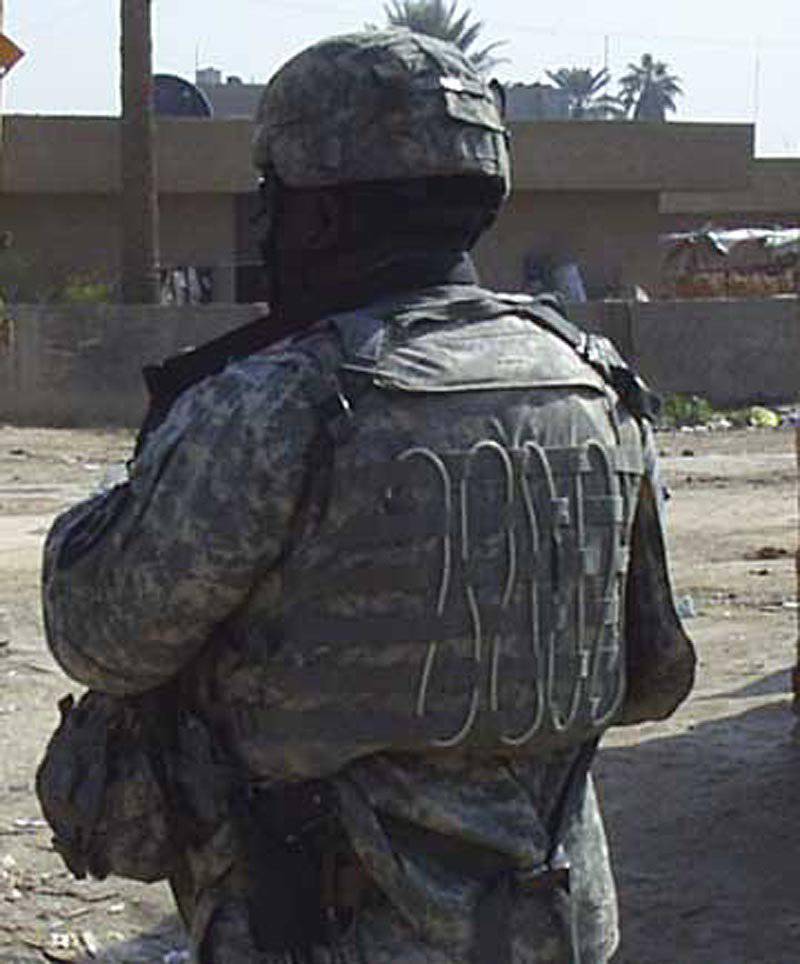
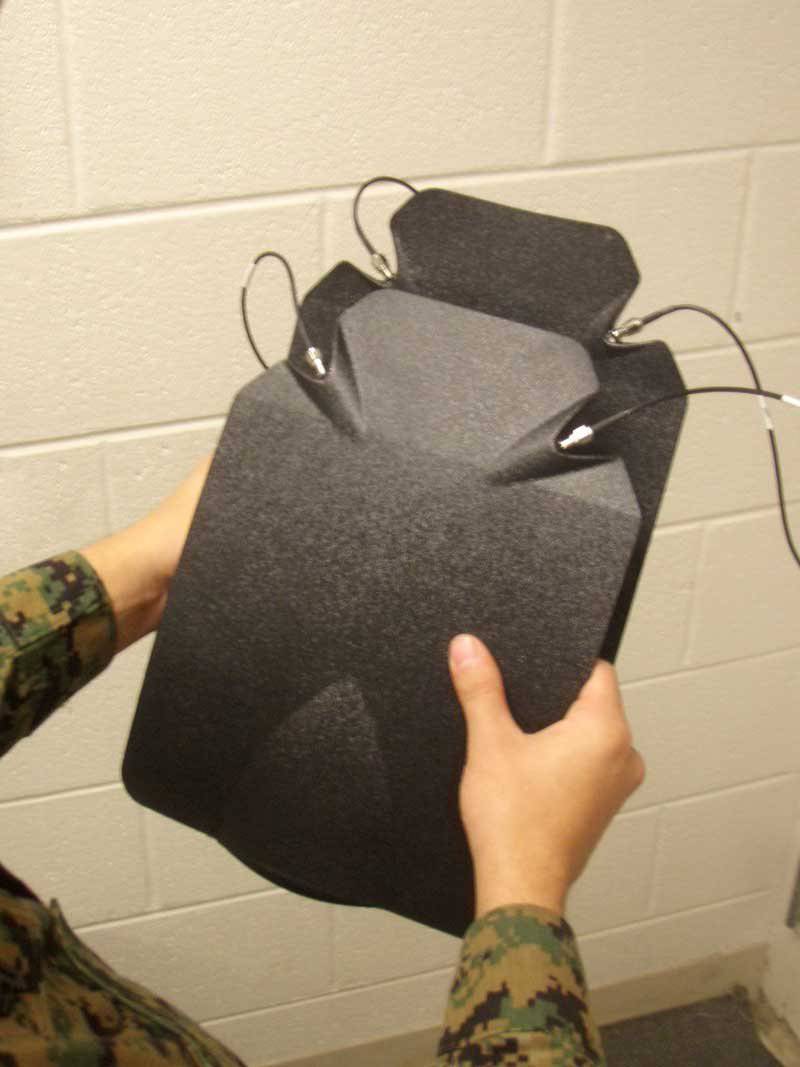
Syntonics has developed the HTA SINCGARS antenna, which is a low-profile antenna that helps protect military communications operators from identifying enemy snipers
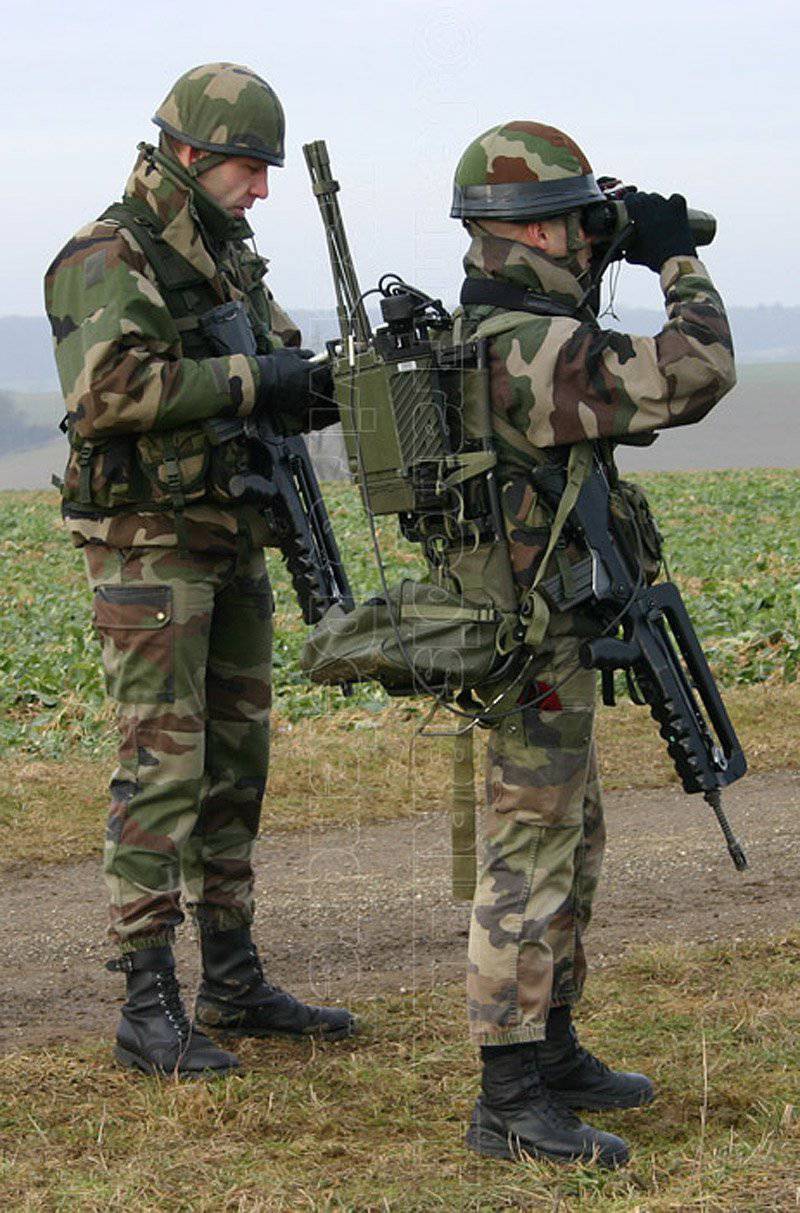
Radio VS4-IP F @ STNET is a member of the Thales PR4G family
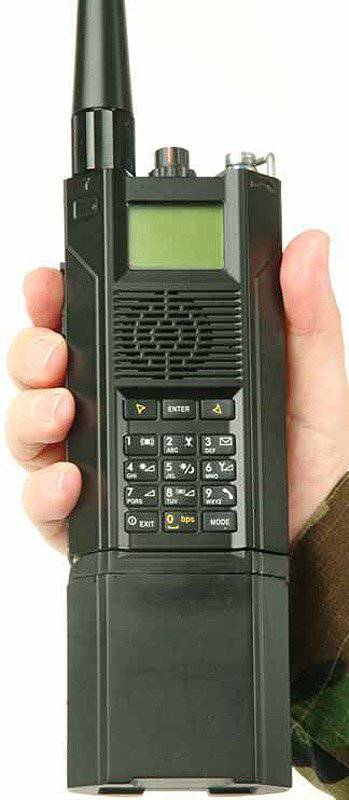
Kongsberg MH300 is a manual version of the MRR series (Multi-Role Radio is a universal radio station)
Harris remains superior in the HF area due to its FALCON II line. The American standard AN / PRC-150 (C) was approved by the NATO Military Committee in the middle of the 2006 year and is widely used in Afghanistan as a horizon communication during patrols. 150 (C) provides Type 1 encryption approved by the National Security Agency. This is a secret voice and data encryption that supports standard advanced encryption. Also included in the cryptographic package is CITADEL proprietary encryption, which is also part of the RF5800H-MP FALCON II export package, which allows PRC-150 (C) users to work with existing widespread RF5800H-MP, for example, in the Partnership for Peace exercises. The radio station supports high-speed data transfer up to 9,6 Kb / s and allows integration with the mode of sending messages through its software compatible with STANAG 5066; The radio also uses the STANAG 4358 3G ALE standard.
The AN / PRC-150 (C) feature, which incorporates the BOWMAN experience, is the so-called “desperate attempt” of voice data transmission, allowing a digital voice to pass through a very noisy space to transmit at almost 75 bit / s. The radio station is capable of supporting noiseless, secure communication using only the MELP 600 bit / s vocoder. Due to the fact that the radio transits the lower frequency band of the VHF, it can also offer a secure FSK voice voice transmission using CVSD (variable-slope delta modulation) at 16 Kbps in VHF bands, linking it into standard VHF combat radio stations.
The US quickly accepted AN / PRC-150 (C) as an alternative and supplement to MILSATCOM throughout the army in connection with operations in Afghanistan and Iraq; this standard was previously largely limited to special operations and medical services. The US Department of Defense gave Harris a contract worth 104 million dollars for the production of AN / PRC-150 (C) radio stations for the US Army, this is the first stage of a five-year contract with a potential value of 422 million dollars.
Export RF5800H-MP has the same dimensions as the PRC-150 (C); Indeed, the American radio station is based on successful export versions with 1,5 and 20 watts. Pakistan has signed a second contract for FALCON II HF radio stations worth 76 million dollars, which followed an order worth 68 million dollars, made back in the year 2005.
Harris also manufactures a BOWMAN HF portable radio station under the designation PRC-325 for the British Army and MPR9600 for export. The radio differs from RF5800H-MP and AN / PRC-150 (C) 30 – 60 MHz VHF frequencies and uses only its own PRITCHELL encryption, the lack of CITADEL auxiliary encryption for the English version, and also has a slightly smaller 4,5 kg mass. The radio station is controlled by a new removable remote control unit, text messages can be sent to other radio stations through this unit.
Beginning at 2006, all export products of the FALCON II HF range are currently manufactured by Harris UK; production BOWMAN while continuing. The first buyers were the Spanish armed forces.
The Datron tactical portable PRC4100H HF is a programmable radio station in the HF band. A feature of the PRC4100 family is that the frequency range is determined by an additional module that is installed on the left side of the radio station, allowing the main PRC4100 device to switch between multi-band optional VHF, HF and HF / VHF modules in accordance with the requirements of the combat mission. The PRC4100M 1,5 – 30 MHz HF version weighs 4,65 kg with a BA-5590 battery and is compatible with the MIL-STD-81 OF standard, supports data transmission at high frequencies up to 9,6 Kb / s. The radio uses the standard MIL-STD-188-141B for ALE, also has built-in GPS.
L-3 also offers a PRC3150 HF radio with 1,6 – 30 MHz frequencies of 3,4 kg without a battery, which has eight specific power levels from 5 to 20 W.
The company Telefunken RACOM produces a modernized radio station HRM 7000; the company describes it as programmable, supporting HF communication protocols - HRS 7000, MAHRS, STANAG 5066, 4285, 4539, 45438 and MIL-STD-188-110A with the possibility of software improvements in the future. The company also showed a surveillance radar of the HF range using 8 Kb / s communication channel, which is connected to the video camera using new signal compression algorithms from ED Research.
The Tadiran HF6000 High Data Rate Transmitter 1,5 – 30 MHz or PRC-6020 is the heir to the earlier radio stations in the product line, it has a data rate of up to 9,6 Kb / s. It is compatible with STANAG 4285 and Mil-STD-188-110 standards and has the option of compatibility with STANAG 5066. In the hopping mode, the speed drops to 4,8 Kb / s only in the MFSK mode (multilevel-frequency shift keying). The radio can program up to 100 pre-formatted messages and up to 900 encoded messages and has a mass with an 3,9 kg battery.
In South Africa, Saab Grintek releases TR2000 and newer radio stations TR2400 HF; both are part of the PHOENIX family with an 25 watt power output. TR2400 contains standard NATO protocols, such as STANAG 5066 and MIL-STD-141ALE, and also offers the Quick ALE solution, which increases ALE speed by 60% compared to the 141A standard. Vocoder radio stations typically operate at 2,4 kbps, then the speed drops to 800 bps in the frequency hopping mode in poor data transmission conditions.
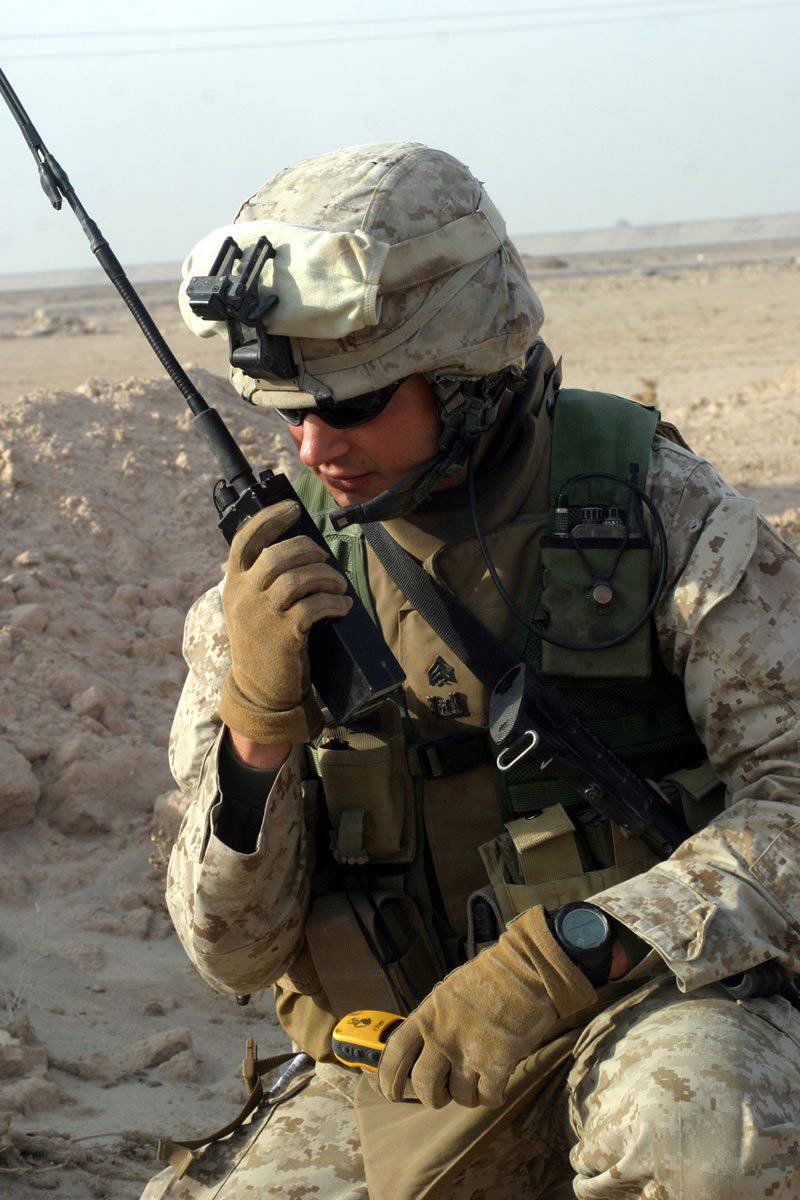
Thales AN / PRC-148 MBITR - the most popular multi-band portable radio station
BAE Systems is a key partner in the JTRS GMR and HMS radio programs and works closely with Boeing
Marines platoon commander contacts his forces on foot patrol
Private performs a radio check during an amphibious raid in Iraq
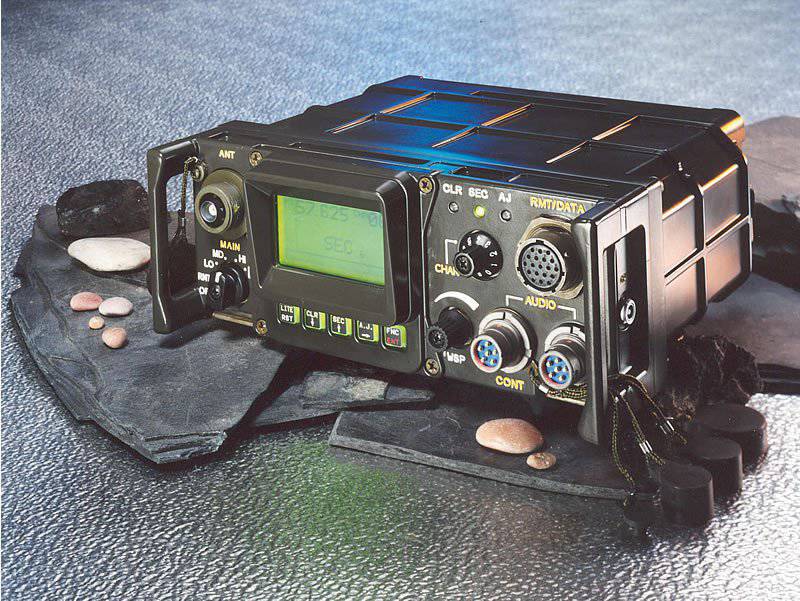
Tadiran CNR-9000
Multiband Programmable Radio (SDR)
A number of countries are running their national program for programmable radio stations (SDR - Software Defined Radio), which are dominated by portable options. Most of them are still far from completion, which allows regular multi-band radio stations to fill the gap. Providing various waveforms in a wide range of frequencies on a single platform is a measure to reduce weight, since the capabilities of several specialized radio stations are combined into a single platform. Initially limited to special forces and narrow missions (for example, an advanced aeronautical aircraft engineer), now these radio stations have moved into regular troops and their cost has decreased.
The AN / PRC-148 radio station is deservedly known as the best-selling multi-band hand-held radio. Thales has also developed the MA7035 MBITR wearable system, an optional solution that turns the MBITR 5 W output power into 20 W, in fact it becomes a portable wearable system. MBITR is included in a hiking backpack, the radio station has direct control of amplifiers, which allows you to perform frequency hopping at higher power. Additional antennas are also provided to better utilize excess power. The whole system weighs 7,25 kg.
Rohde and Schwarz MR3000 family of programmable radio stations provide 1,5 MHz – 512 MHz frequency coverage. These are the two HF / VHF MR3000H and VHF / UHF MR3000U models for the HF, VHF and military UHF bands. Both radios have a common supply chain and the same removable interface. The HF / VHF MR3000H has a 1,5 MHz – 108 MHz transmission band, and with 100 kHz intervals it increases from 1,5 MHz to 512 MHz. The HF antenna is automatically tuned and uses MIL-STD-188-141B for ALE; for the main systems, a flexible whip HF antenna with a height of 2,4 meter is used; for a VHF band in a portable role, either a rack-mount or 1.5-meter flexible antenna is used. Channel spacing is 1 kHz for HF, and for VHF / FM 5, the diversity options are from 5 kHz to 25 kHz. Up to 100 preset frequencies are available, 10 of them are user controlled in the field using the jog dial. Transmission power ranges from 1 W to 10 W. The data transfer rate when using the STANAG 4285 in the HF band is 3,6 Kbps, while using the STANAG 4539 is 12,8 Kbps in VHF, in its proprietary mode it can be raised to 64 Kbps. All three can be combined with radio stations in the mode of fast data transmission. Rohde and Schwarz offers its own options for changing frequencies, alternative electronic security measures for fast data transfer from SECOM-H for HF and SECOM-V for VHF, while encryption is provided by an embedded voice and data solution.
The MR3000U has almost the same characteristics as the “H” variant with the 25 – 512 MHz transmission band using SECOS waveforms and SECOM encryption, but it was also tested with NATO's HaveQuick 1 and 2 and SATURN in the ground-to-air mode .
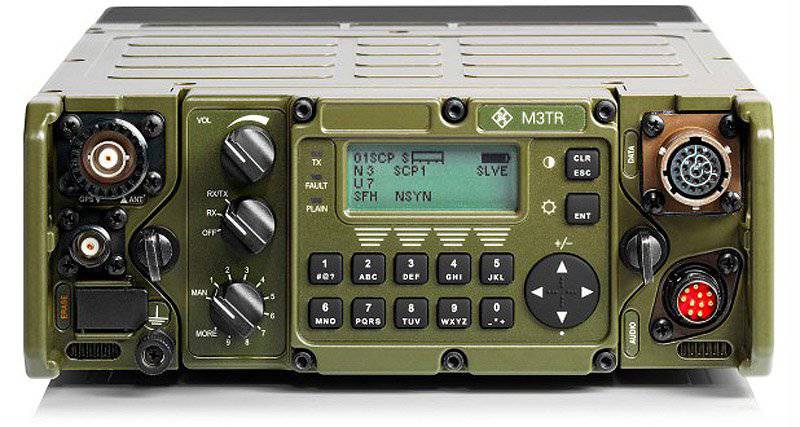
Portable MR3000 radio with removable front panel
Programmable radio station of the Turkish company Aselsan. The company still has to make a clear decision on a portable radio station, although its preliminary decision is based on the VRC-9661 30 – 512 MHz VHF / UHF, the first radio stations were delivered in the 2010 year. Currently, this 10W / 50W power amplification radio station is designed to be installed on vehicles, but Aselsan intends to turn to a solution in which two 9661 portable radio stations could be used outside the vehicle. Such an approach to programming radio stations allows Turkey and other potential users to continue using the standard PRC-9600 - a licensed copy of SCIMITAR from GEC-Marconi.
The new 9661 family will use the Advanced Networking Frequency Hopping (Advanced Networking Frequency Hopping) ANFH. ANFH offers MEL 2,4 Kb / s, voice coding, asynchronous (9,6 Kb / s) and synchronous (16 Kb / s) half duplex encrypted data transfer. Other communication protocols include the VRC \ PRC-9600 VHF tactical radio family, ground-to-air protocols, the VHF / UHF protocols, and the TASMUS packet radio broadband family.
The Selex Communications CNR2000 family is a new range of HF / VHF (1,6 MHz – 59,9750 MHz) multiband, multi-purpose, multi-functional radio transceivers built into a single package of characteristics for solving various operational tasks on the battlefield. Operating in the extended frequency range 1,6 MHz – 59,9750 MHz allows short / medium / long range radio communication on the line-of-sight, extended line-of-sight and out-of-sight channels using tactical radio stations of the HF and VHF bands. The open, programmable architecture of the CNR2000 family allows for expansion and modification in accordance with customer requirements and progressive development in the direction of future configurations of 21 tactical radio stations of the century, in accordance with the requirement for full integration of field devices of the lower echelon into the Operational Management System.
CNR2000 equipment has built-in tools for working as components within radio networks and as components for radio communications, consistent with wired communications, providing situational awareness when using GPS positioning data; CNRA services (Combat Net Radio Access - access to combat network radio stations), for example, an addressed call between CNR2000 users and connecting to external tactical and infrastructure networks. Protection against interference can be provided by the patented TRANSEC / COMSEC circuit as an internal shortwave electronic protection module.
The CNR2000 family includes a portable radio station (SRT-178 / M 25W HF / SSB - VHF / FM 10 W) as well as portable stationary and semi-stationary models. The main task of the SRT-178 / M is to operate as a combat network radio station in wireless voice / data networks in the advanced area between the group members at different levels.
Another player in the multi-band market is the X-NUMX-1,5 MHz Multi-band Portable Radio MHz TTR-108M from L-1210 Titan Group, which combines HF, VHF and built-in GPS, it has a 3 power of W, only 20 kg with its BA-3,6 battery . In HF mode, it offers several data transmission waveforms, including MIL-STD-5590B, STANAG 110, 4285 and 4415, with voice transmission in the HF band, provided either by LPC-4529e, STANAG 10, MELP or CVSD. Security is provided by AES encryption and frequency hopping to 4591 bursts / s in VHF mode. The data transfer rate reaches 300 Kb / s in ECCM mode (anti-countermeasure measures) in the VHF range and 16 – 75 Kb / s in the HF range. Initial sales were conducted in the domestic market, but the company has now entered the international market.
As for the HF band, Harris has dominated the “multi-band” world for some time with a family of AN / PRC-117F radio stations available for the US and for export. The 20 W radio station covers a whole range of VHJF: 28 – 90 MHz low frequency VHF, 90 – 225 MHz high frequency VHF and military UHF band on 225 – 512 MHz. The complete radio with two BA-5590 batteries weighs 7,2 kg. The radio station is very often used for interoperability and communication with the upper echelons, it has several Type 1 encrypted waveforms for command operations on UHF SATCOM, SINCGARS ESIP, HAVEQUICK 1 / 2 and Harris own signal forms under the HPW designation for satellite and in the line of sight (SATCOM and LOS) communications. The throughput is up to 64 Kb / s within the line of sight. The radio can work with different standards, including RS-232E, MIL-STD-188-114A or RS 422 in synchronous and asynchronous modes and supports ten DAMA presets (Demand Assigned Multiple Access) (multiple station (multilateral) access with on-demand channel allocation) for UHF MILSATCOM communications.
This high-tech solution complements the more general exported RF5800M-MP solution, which uses the same frequency range and CITADEL encryption for voice and data at speeds up to 64 Kbps, and an internal GPS receiver is installed.
Raytheon's multi-band variant is the AN / PSC-5D MBMMR (Multiband, Multimission Radio), which is well known to the US Special Operations Forces. It covers the range of 30-512 MHz and includes information encryption, 142 preset channels and memory for 250 encryption keys. The radio also has the option of using a single combined antenna across the entire spectrum. MBMMR supports a range of waveforms including SINCGARS, HAVE-QUICK 1 & 2, and UHF SATCOM. For UHF SATCOM, it has a bandwidth of up to 16 Kb / s using DAMA and up to 76,8 Kb / s in other modes. The radio weighs 7,2 kg with two BA-5590 batteries. Raytheon has also developed the SATCOM On The Move add-on package for the AN / PSC-5D MBMMR, "SATCOM On The Move" ([Mobile satellite article will be published soon]), consisting of a 75W power amplifier, optional filter, and X flat panel antenna. -Wing. The system can also work with AN / PRC-117F.
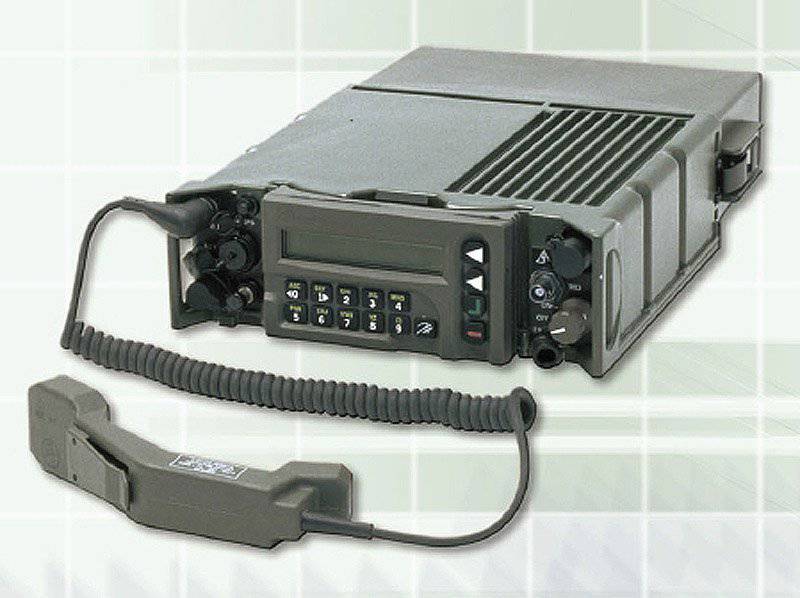
The CNR2000 family is a new line of multi-band, multifunctional tactical radio communication transceivers HF / VHF (1,6 MHz – 59,9750 MHz) (transceivers) from Selex Communications, which combine the capabilities to perform various tasks on the battlefield. Operating in the 1,6 – 59,9750 MHz frequency range allows you to have short / medium / long-distance communications over LOS (Line Of Sight - within sight), ELOS (Extended Line Of Sight) and BLOS (Beyond Line Of Sight -) out of line of sight) with tactical radio stations HF and VHF. The open system, the programmable architecture of the CNR2000 family allow for the expansion / manufacturing according to the customer’s specifications to meet special requirements and ensure the progressive development of future configurations of the 21 century tactical radio station along with the requirement for the full integration of low-end field devices
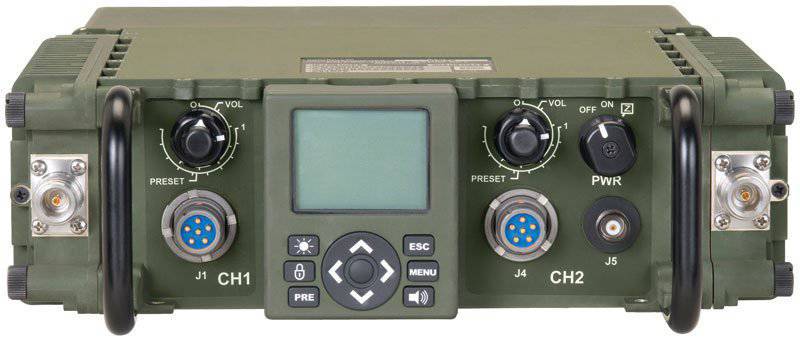
The HMS JTRS portable radio provides built-in connectivity for brigades and related soldier / platform applications
Harris's new RF300M-MP portable radio was officially unveiled in October 2010. It operates in the 30 MHz – 2 GHz band, has a SIERRA II interference-proof module with selective availability, it uses SINCGARS, HAVEQUICK II, VHF / UHF AM and FM, a patented HPW also used in AN / PRC-117, DAMA SATCOM, and also promising broadband communication protocols, including ANW2 (Advanced Networking Wideband Waveform - an advanced network wideband communication protocol) developed by Harris. When 2 GHz is reached, this will allow the radio to operate in the L-band commercial SATCOM satellite network, as well as create future communication protocols.
Although Rockwell Collins / Thales FLEXNET ONE VHF / UHF SDR radio station is programmed and has the same dimensions and power as the PR4G, it is only a portable model, but compatible with the manual and portable versions of the present PR4G family due to the PR4G and F @ STNET ECCM. In mobile mode, it supports broadband network of 150 participants.
Although elements of the JTRS HMS program were used in the portable radio station FALCON II, the implementation of the state program for its development continues. General Dynamics and its partner Rockwell Collins recently installed prototype models for evaluation testing. As for the radio stations JTRS, the Ministry of Defense has reduced its need for a two-channel portable radio station from 104 000 to almost 16 900 pieces.
The radio will operate in the 2 MHz – 2,5 GHz band and will weigh less than the 5,9 kg without battery; it will be sealed, and to increase the duration of work will have an option with two batteries. The radio station will have a built-in secure SAASM GPS module, remote control and wireless key exchange is available. Ultimately, the radio will provide 19 communication protocols: Wideband Networking Waveform, Mobile User Objective System, UHF DAMA, IBS, VHF protocols, including AM PBX and SINCGARS, HF, SATURN, HaveQuick II, EPLRS, SINCGARS and SRW protocols across all three frequency bands . Two portable radios can be connected via an Ethernet cable to create a four-channel solution; this will create a potential basis for replacing many JTRS mobile stations (formerly CLUSTER 1), the number of which has also been significantly reduced.
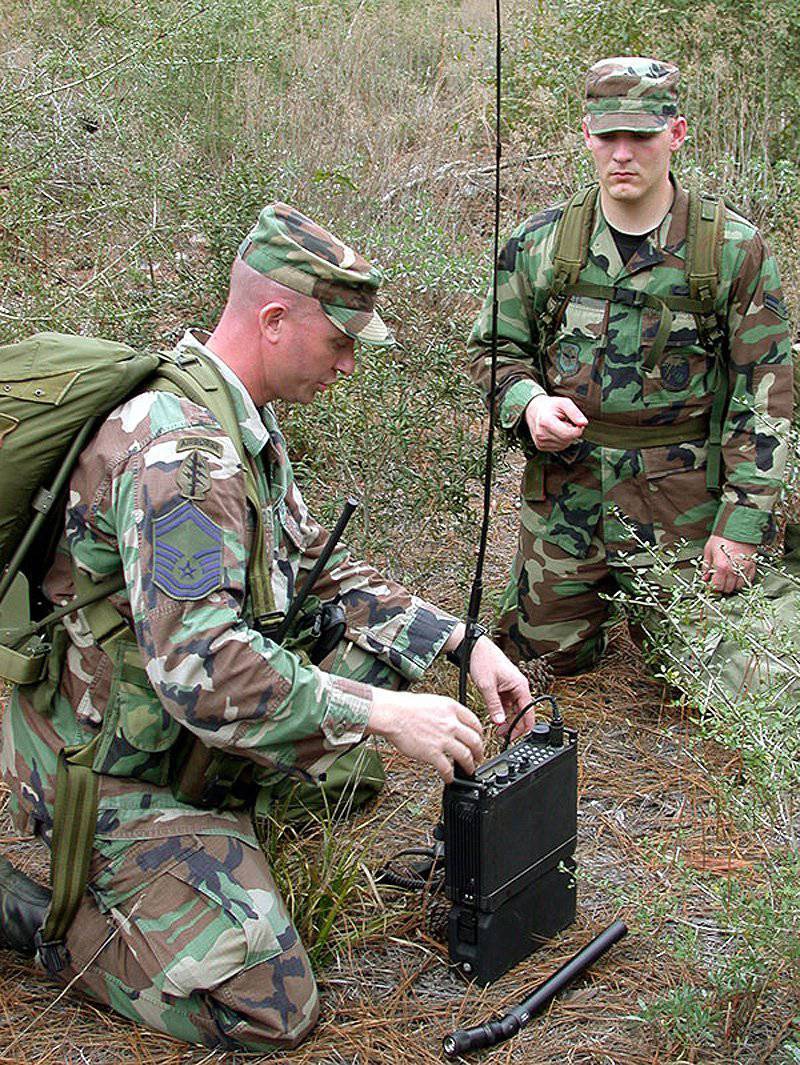
Raytheon's AN / PSC-5D multi-band tactical radio station is designed to secure tactical radio communications.
Hack and predictor Aviator
High-power and long-range portable radio stations form the basis on which tactical united networks (the Internet) are formed. Smaller radio stations are possible and accessible, but they lack the necessary power and functionality for many scenarios. A large number of these usually single-frequency radio stations remaining in operation means that the amount of investment required to acquire, install and operate more complex solutions is limited. As a result, the situation when regular radio stations will work side by side with programmable models will persist for many more years.
Materials used:
www.monch.com
www.kongsberg.com
www.generaldynamics.uk.com
www.exelisinc.com
www.thalesgroup.com
www.elprof.ro
www.harris.com
www.codanradio.com
www.telefunken-racoms.de
www.elbitsystems.com
www.raytheon.com
www.rockwellcollins.com
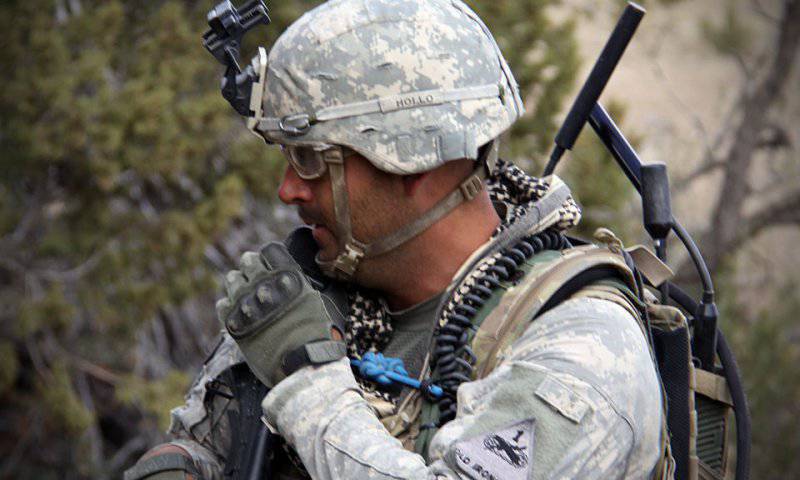
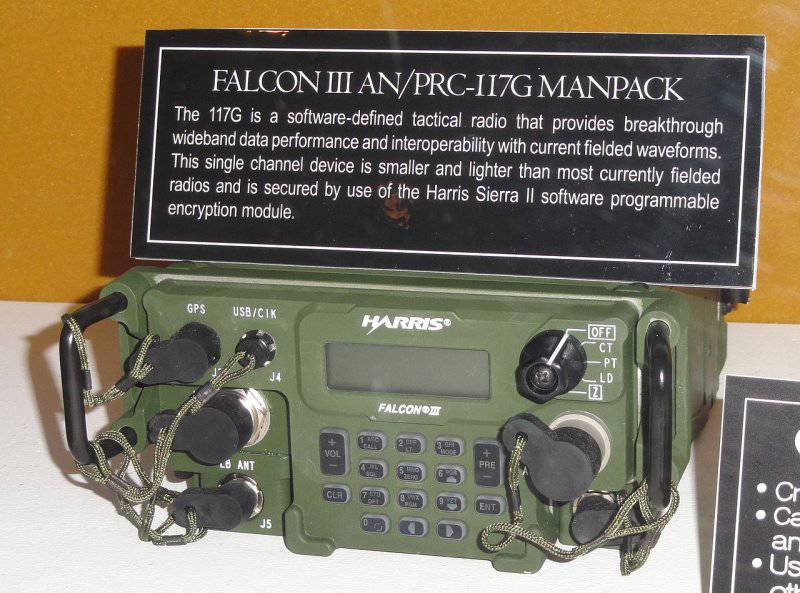
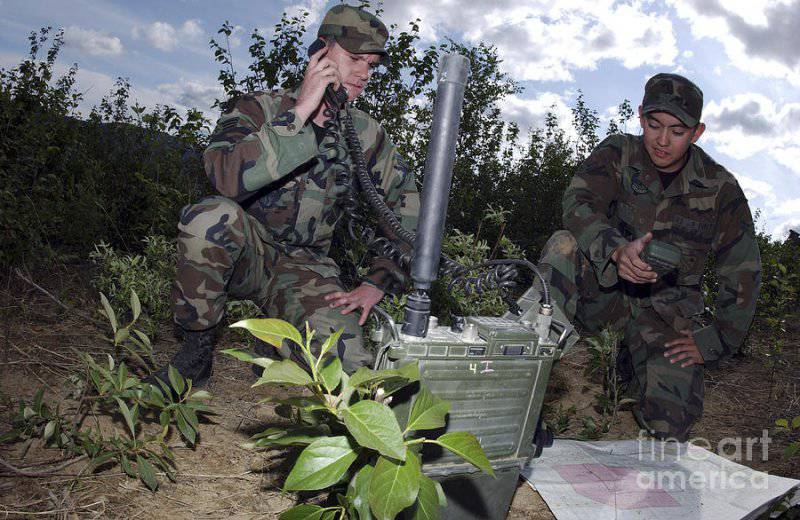
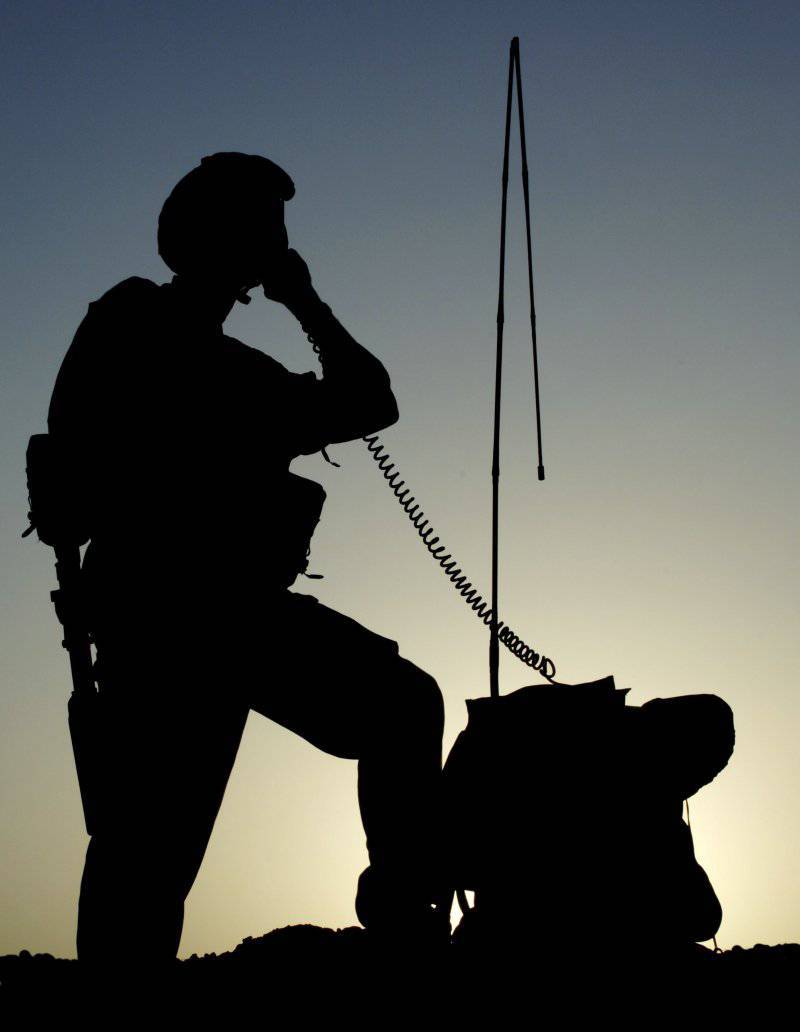
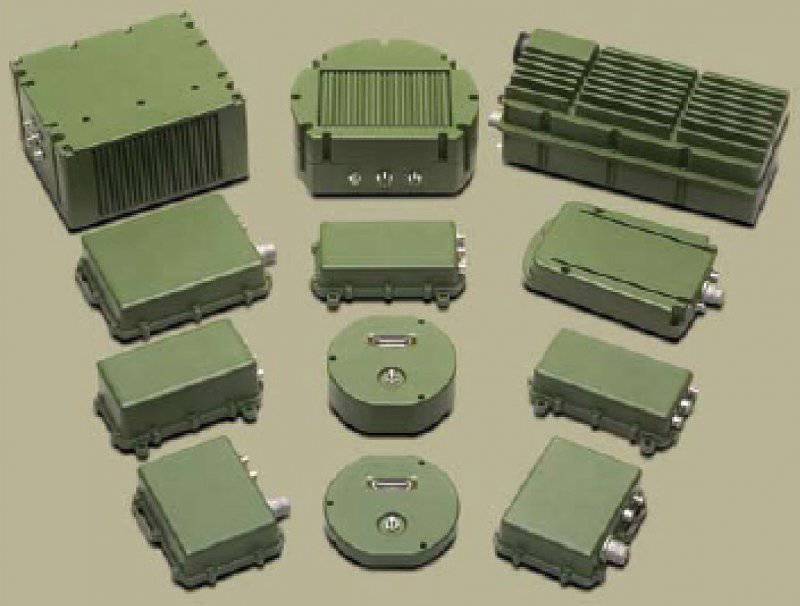
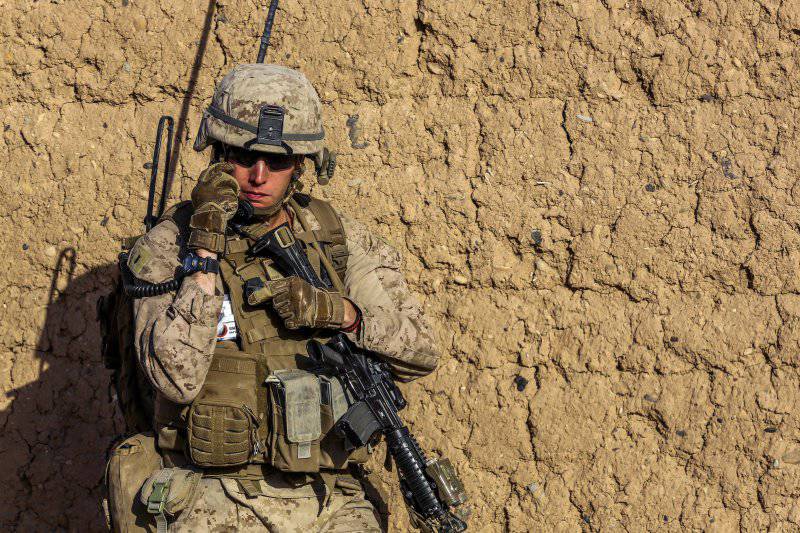
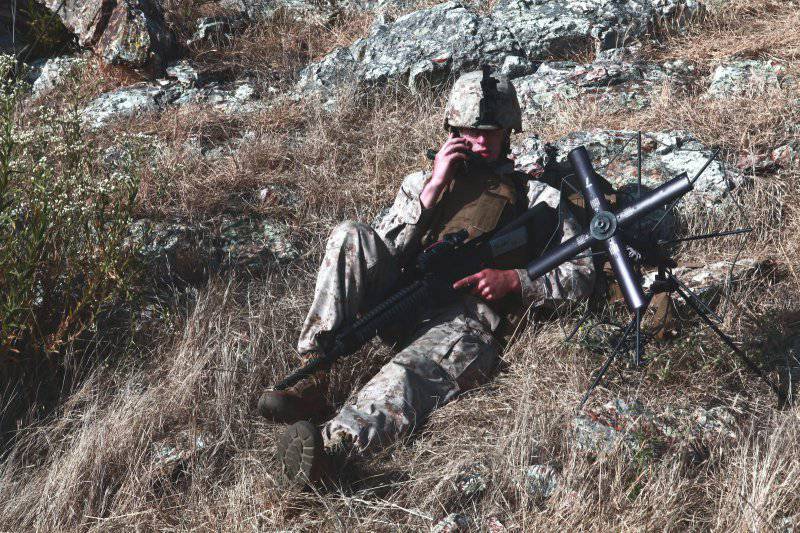
Information